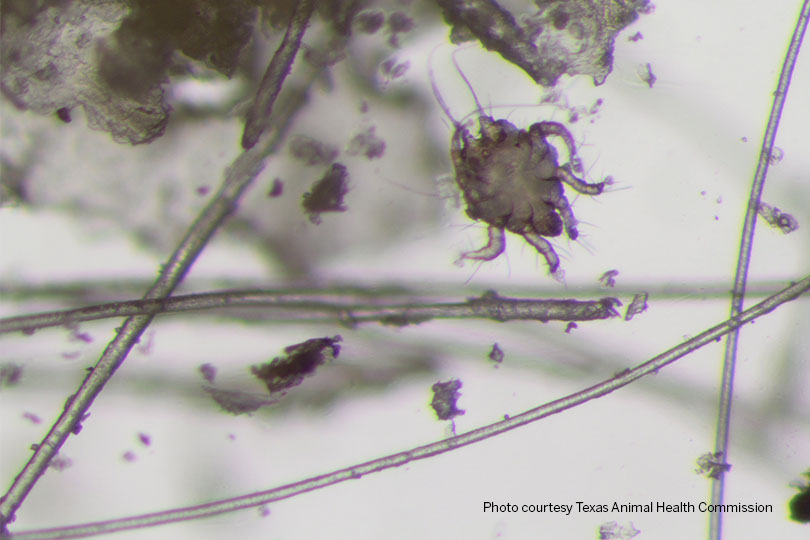By Jennifer Dorsett
Field Editor
In December, cattle in Atascosa County and neighboring Frio Country were recently found by the Texas Animal Health Commission (TAHC) to have Chorioptic mange, caused by Chorioptes bovis (C bovis) mite infestations.
TAHC said in a press release a private veterinarian observed hair loss and skin lesions on the cattle which led to sample collections and ultimately, diagnosis.
C bovis is the most common source of cattle mange in the U.S., according to the Merck Veterinary Manual, which says most cattle are subclinically infested. This species of mite lives on the surface skin and does not burrow, so it may be less obvious than burrowing mites that cause more noticeable skin irritation and signs of itching in infested animals.
“This particular mite must reach high population densities to cause visible signs of infestation,” Dr. Susan Rollo, TAHC state epidemiologist, said. “The last reported case in Texas occurred approximately four years ago in the Panhandle area.”
Per the State of Texas Administrative Code, any owner or caretaker of livestock infested with or exposed to scabies or mange mites must immediately treat the livestock under supervision of TAHC, the U.S. Department of Agriculture (USDA) Animal and Plant Health Inspection Service (APHIS) or a veterinarian specially authorized by TAHC for disease control or eradication.
In the U.S., C bovis may be treated in beef cattle and nonlactating dairy cattle at labeled dosages by approved pour-on treatments, injectables, dips or sprays. Lactating dairy cattle may be treated only through spray or pour-on applications.
The infested animals must be quarantined from other untreated livestock for at least 14 days after the last required treatment is completed. The herd must be inspected by TAHC, USDA APHIS or an authorized veterinarian and confirmed to be free from scabies or mange mites before being released from quarantine.
The C bovis mite is transmitted from direct contact between host animals, including cattle, sheep, goats and horses.
There are no known instances in the state of Texas where wildlife have transmitted C bovis to domestic livestock, Rollo noted.
“To our knowledge, this mite has not been identified in wildlife in Texas,” she said.
Although the parasites can cause skin irritation and loss of hair, TAHC said C bovis and other mites are easily preventable through the use of an approved antiparasitic such as coumaphos, doramectin, eprinomectin, ivermectin, moxidectin, permethrin or phosmet.
Rollo noted it is not necessary to treat cattle housing or shelters directly for C bovis after infestation is identified in a herd, but general herd health benefits from clean environments and maintaining biosecurity.

